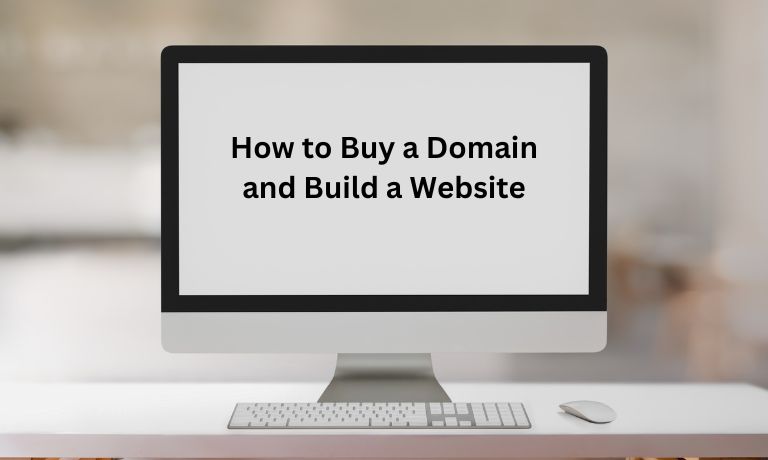In today’s digital age, establishing an online presence is essential for individuals and businesses alike. Whether you’re a freelancer, entrepreneur, or small business owner, having a professional website can help you showcase your skills, attract clients, and grow your brand. However, if you’re new to the world of web development, the process of buying a domain and building a website can seem daunting. Fear not! In this comprehensive guide, we’ll walk you through the steps to purchase a domain name and create your own website, empowering you to bring your online vision to life.
Step 1: Choose a Domain Name
Before you can build a website, you’ll need to choose a domain name – the web address where visitors can find your site. Here are some tips to help you select the perfect domain name:
- Keep it simple and memorable.
- Use keywords related to your industry or niche.
- Avoid hyphens, numbers, and special characters.
- Check for domain availability using a domain registrar like GoDaddy, Namecheap, or Google Domains.
Once you’ve found an available domain name that suits your needs, it’s time to move on to the next step.
Step 2: Register Your Domain
Once you’ve selected a domain name, you’ll need to register it through a domain registrar. Here’s how to do it:
- Choose a reputable domain registrar and create an account.
- Enter your chosen domain name into the registrar’s search tool to see if it’s available.
- If your domain is available, proceed to the checkout process to complete your registration.
- Consider purchasing additional services like domain privacy protection to keep your personal information private.
After completing the registration process, congratulations! You now own your own domain name.
Step 3: Choose a Website Building Platform
With your domain name secured, it’s time to choose a platform for building your website. There are several options available, each with its own set of features and capabilities. Some popular website building platforms include:
- WordPress: An open-source content management system (CMS) that powers millions of websites worldwide.
- Wix: A user-friendly website builder with drag-and-drop functionality and customizable templates.
- Squarespace: A design-centric platform that offers beautifully crafted templates and built-in e-commerce functionality.
- Shopify: An e-commerce platform specifically designed for building online stores and selling products.
Consider your needs, technical expertise, and budget when choosing a website building platform that’s right for you.
Step 4: Design Your Website
Once you’ve chosen a website building platform, it’s time to design your website. Here are some key steps to follow:
- Select a template or theme that fits your brand and aesthetic preferences.
- Customize your website’s design by adding your logo, brand colors, and images.
- Organize your content into pages, such as Home, About, Services, and Contact.
- Use the platform’s editing tools to add text, images, videos, and other media to your pages.
Take your time to create a visually appealing and user-friendly website that effectively communicates your message and engages your audience.
Step 5: Add Essential Features and Functionality
Depending on your website’s purpose and goals, you may need to add additional features and functionality to enhance its performance and usability. Here are some common features to consider:
- Contact forms: Allow visitors to get in touch with you directly through your website.
- Social media integration: Enable visitors to share your content and follow you on social media.
- E-commerce functionality: If you’re selling products or services online, consider integrating an e-commerce platform like WooCommerce or Shopify.
- Search engine optimization (SEO): Optimize your website’s content and structure to improve its visibility and rankings in search engine results.
Step 6: Test and Launch Your Website
Before launching your website to the public, it’s important to thoroughly test it to ensure everything is working correctly. Here are some tests to perform:
- Check for broken links, missing images, and other errors.
- Test your website’s compatibility across different devices and browsers.
- Verify that all forms and interactive elements are functioning properly.
Once you’re satisfied with your website’s design and functionality, it’s time to launch it to the world! Publish your website and promote it through social media, email marketing, and other channels to attract visitors and drive traffic.
Step 7: Maintain and Update Your Website
Building a website is just the beginning – maintaining and updating it regularly is essential for its long-term success. Here are some tips for ongoing website maintenance:
- Regularly update your content to keep it fresh and relevant.
- Monitor your website’s performance and analytics to track visitor behavior and identify areas for improvement.
- Keep your website’s software, plugins, and security measures up to date to protect against security threats and vulnerabilities.
By following these steps and investing time and effort into your website, you can create a professional online presence that helps you achieve your goals and grow your business.
Read More
- 10 Best Social Media Competitor Analysis Tools
- Best ClickFunnels Alternatives: A Comprehensive Guide
- 10 Best Ways to Earn Interest on Your Savings
- Top 10 Best Financial Accounting Software for Small Businesses
- How to Buy a Domain and Build a Website

